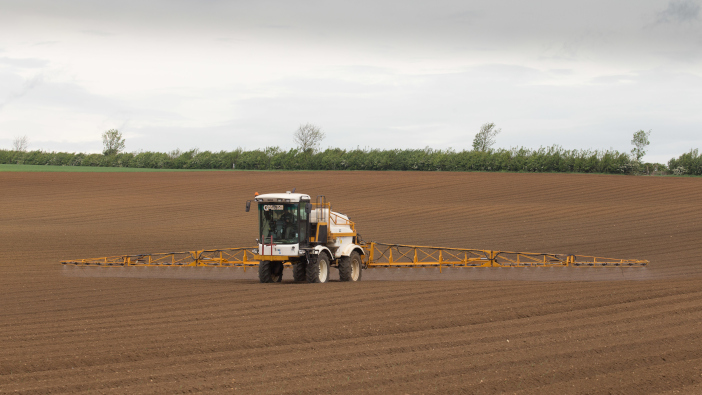Growers planning to apply pre- or post-emergence herbicides in late-sown crops should be aware of potential risks to crop safety and efficacy if conditions are sub-optimal.
The wet autumn has led to widespread disruption to the drilling of winter crops, with some looking to grab any opportunity to get seeds in the ground. However, Hutchinsons technical support manager Duncan Connabeer warns that wet soils may still present a challenge for establishment and weed control.
“Where crops have been drilled or mauled in during late November, rough seedbeds will inevitably reduce the efficacy of residuals, and increase the risk of damage,” he said.
Mr Connabeer added that crops which have been broadcast onto seedbed, rather than drilled, should not be treated with residual chemistry. This is not supported by chemical manufacturers and could lead to crop damage due to the seed germinating where the herbicide is active.
In the case of winter beans, growers should avoid the temptation to apply pre-emergence herbicides when the crop is emerging or has already emerged.

Further consideration should be given to crops that are water-stressed, he added. It’s possible that rooting will have been affected, which could increase the risk of crop damage.
Many products should also not be used in waterlogged soils, including propyzamide on oilseed rape, although in such cases there is still sufficient time to get sprays on and still expect good efficacy before the application window closes at the end of January.
“Where other crops are still to be drilled, we may yet see good conditions for product use, but there may be further tank mix and or timing constraints,” he explained. “Much of what, and/or when we can do things, will be greatly dependent on drilling depth, seedbed and soil conditions.”
Growers should also remember that any crop sown after January is considered a spring crop by the HSE’s Chemical Regulation Division (CRD), which reduces the herbicide options available.
Ideal conditions for BYDV
The mild, wet autumn has been ideal for aphids, so Mr Connabeer recommends a pyrethroid for growers applying post-emergence herbicide on crops that have exceeded 170 day degrees since emergence or the last aphicide application.
He added that while the latest cold spell will help to slow aphid activity, for those in high-risk areas it may be necessary to treat crops just for aphids if need be.
“Grain aphid (Sitobion avenae) can take temperatures down to -8 degrees Celsius or more, while the bird cherry-oat aphid (Rhopalosiphum padi) is allegedly able to survive -0.5C for 24-48 hours.
“Monitoring shows there is more virus in aphids this autumn, and there are plenty of them around, so applying treatment at the right time can be a worthwhile insurance policy to mitigate the risks. It only takes a mild day or two, and we’ll soon see more aphid flights, so growers in high-risk areas in particular need to be vigilant.”
Waiting until the spring T0 fungicide is too late, he added. “A lot of the BYDV in the 2022/23 crop was spread in the winter/ early spring, before the T0 was applied. Also, remember that once crops reach growth stage 30 moving into 31, you don’t need to treat for aphids because the virus coming in after that stage is less significant and the damage will have already been done.”
For more information go to www.hlhltd.co.uk



